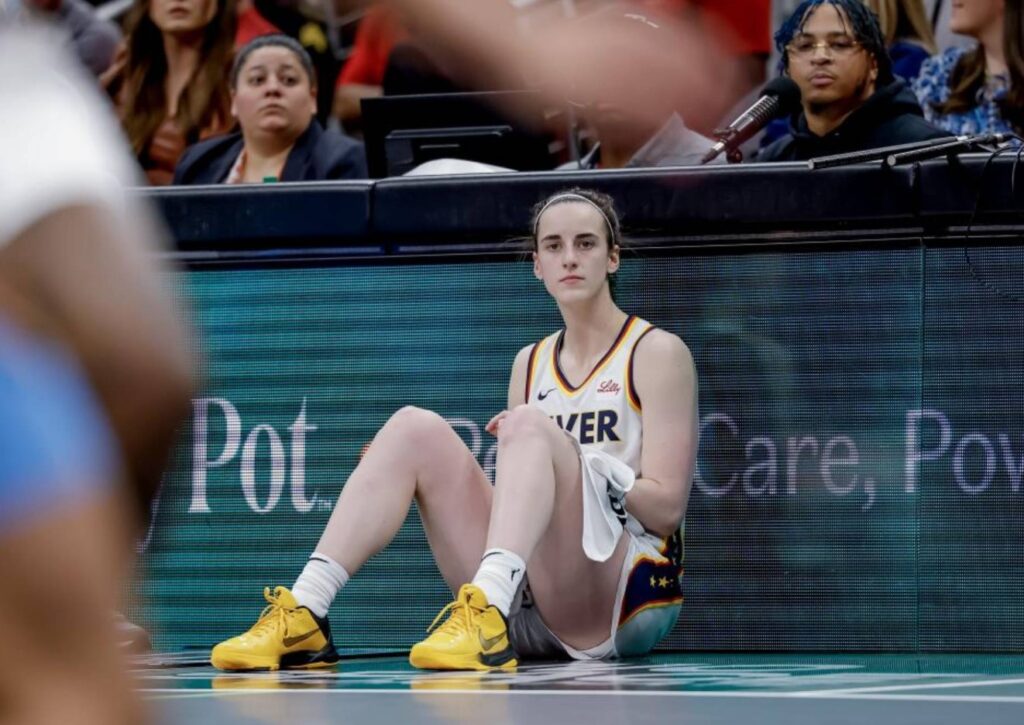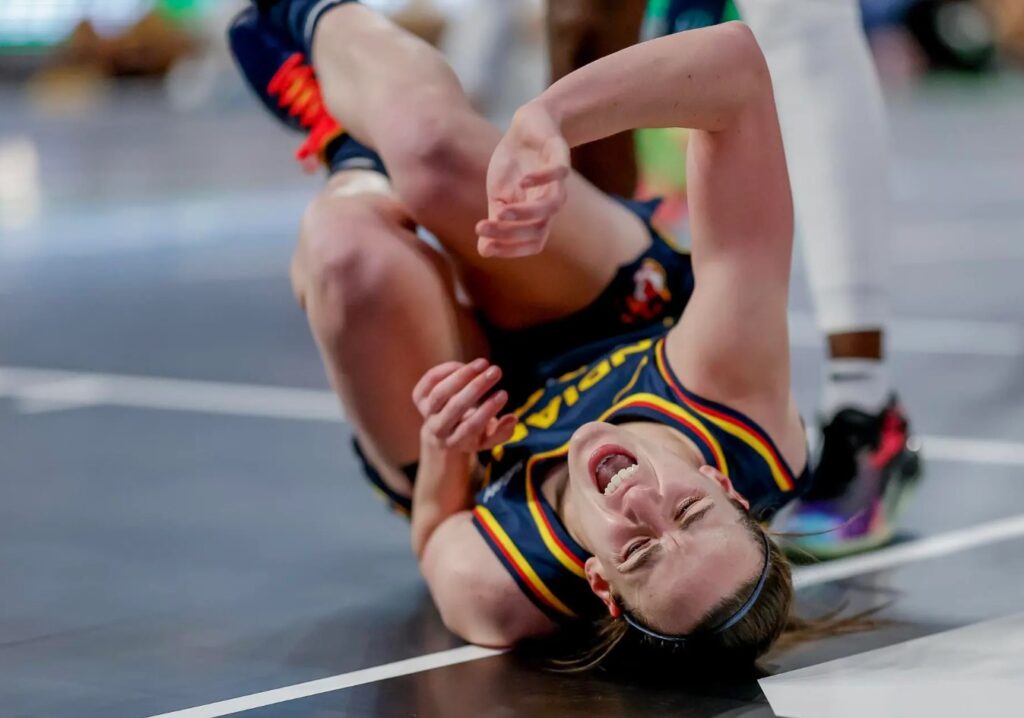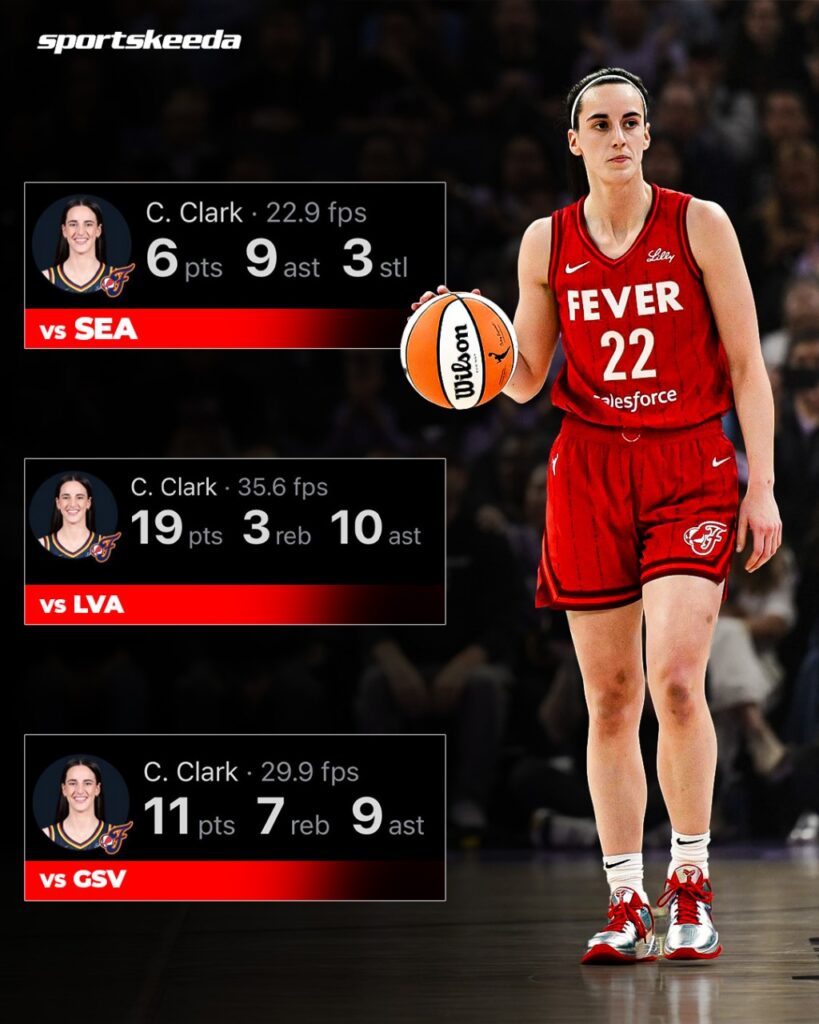The basketball world is witnessing something unprecedented and deeply concerning as Caitlin Clark, the player who redefined women’s college basketball and entered the WNBA with sky-high expectations, finds herself trapped in the most frigid shooting slump of her illustrious career. The numbers tell a story that seems almost impossible to believe: Clark has connected on just one of her last 23 three-point attempts, a statistic so jarring that it forces us to question whether we’re witnessing a temporary stumble or the beginning of a more significant crisis for one of basketball’s brightest stars.
This shocking downturn comes from a player who built her reputation on making the impossible look routine, draining logo shots with the confidence of a seasoned veteran and the flair of a streetball legend, yet now finds herself struggling to find the bottom of the net from beyond the arc. The irony is particularly stark when considering that Clark’s three-point prowess was the foundation upon which her meteoric rise was built, transforming her from a promising college recruit into a household name who single-handedly elevated the profile of women’s basketball to heights previously thought unattainable.
While the Indiana Fever continues to secure victories and maintain their competitive edge in the league standings, the individual struggles of their marquee player have become impossible to ignore, creating a fascinating dichotomy between team success and personal adversity. Clark’s teammates have stepped up admirably to compensate for her shooting woes, demonstrating the depth and resilience of a roster that was specifically constructed to complement her unique skill set, yet the elephant in the room remains her unprecedented struggle from long range.

The psychological weight of such a prolonged shooting drought cannot be understated, especially for a player whose confidence and identity have been so intrinsically linked to her ability to score from anywhere on the court with remarkable consistency and jaw-dropping range. Every missed shot now carries additional pressure, every opportunity from beyond the arc becomes a moment of truth that could either break the spell or deepen the psychological burden that accompanies such a public and prolonged struggle.
Basketball historians and analysts are quick to point out that even the greatest shooters in the history of the sport have endured similar cold streaks, citing examples of legendary marksmen who found themselves questioning their fundamental abilities during temporary but memorable slumps. Stephen Curry, arguably the greatest three-point shooter in NBA history, has experienced stretches where the rim seemed to have a lid on it, yet his ability to persevere through these challenges ultimately reinforced his legendary status rather than diminishing it.
The question that looms largest in the minds of fans, analysts, and perhaps Clark herself is whether this represents a natural ebb and flow of athletic performance or signals deeper issues related to the immense pressure and scrutiny that comes with being the face of women’s professional basketball. The expectations placed upon Clark’s shoulders extend far beyond individual statistics or team performance, as she carries the hopes of an entire league seeking to capitalize on the unprecedented attention and momentum generated by her college career and transition to professional basketball.
Critics and supporters alike are divided on the root cause of her struggles, with some attributing the slump to the natural adjustment period that accompanies the transition from college to professional basketball, while others point to the relentless media attention and commercial obligations that may be affecting her preparation and mental state. The reality is likely more complex than any single explanation can capture, involving a combination of physical fatigue, mental pressure, defensive adjustments by opponents, and the simple randomness that characterizes athletic performance at the highest levels.

What makes this situation particularly intriguing is Clark’s demonstrated resilience and mental toughness throughout her career, qualities that have enabled her to thrive under pressure and deliver clutch performances when her team needed them most. Her ability to bounce back from adversity has been well-documented, suggesting that this current struggle, while concerning in its severity and duration, may ultimately serve as another chapter in her ongoing development as a professional athlete.
The broader implications of Clark’s shooting struggles extend beyond individual performance metrics, as her success or failure has significant ramifications for the WNBA’s continued growth and the sustainability of the increased attention that women’s basketball has enjoyed in recent years. Her journey through this challenging period will be closely monitored not just by basketball fans, but by anyone interested in the intersection of sports, pressure, and human psychology.
As Clark continues to work through this unprecedented shooting slump, the basketball world watches with bated breath, knowing that her eventual breakthrough could be as spectacular and meaningful as her current struggles are concerning and puzzling.
